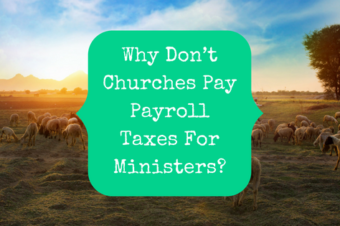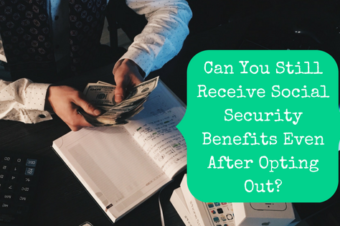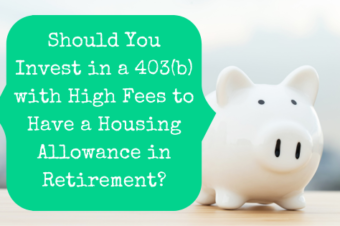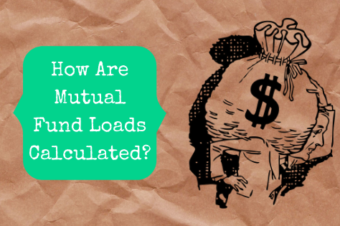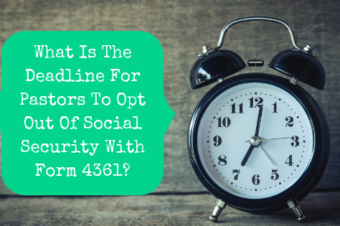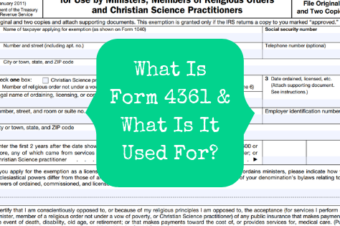As soon as they are licensed, many pastors jump at the chance to opt out of Social Security. Social Security taxes total about 15.3% of a pastor’s salary, so opting out represents significant savings. However, there are certain benefits that Social Security provides that must be replaced if you opt out.
How To Find A Trustworthy Financial Advisor
You need help with your finances. This blog just isn’t quite enough. You want advice from someone who knows more than you do but you don’t want to end up with Bernie Madoff. What do you do?
There are around 350,000 people in the US who call themselves financial advisors. Some of them are amazing and would make your life infinitely better. And some just want to make money and don’t really care about you. How do you separate the wheat from the chaff?
How To Search For A Financial Advisor
Know Your Goal
The first thing you should do after deciding you want to work with an advisor is to clarify what it is you want to accomplish. Are you just looking for a life insurance policy? Do you want someone that will help you map out a plan for your finances that you can take and run with? Are you looking for someone to manage your investments for you? Do you just want to know if it’s okay to retire or if you should keep working a couple more years?
Most advisors cannot do all of those things so it is important to know what exactly it is that you’re trying to accomplish. Knowing your end goal will help you narrow down the 350,000 advisors that you have to choose from.
Ask For References
Next, ask family and friends if they have a trustworthy financial advisor that they think you would get along with and can provide the services that you are looking for. You have to ask individuals and not a search engine for this one. I know that for most things you can do a quick search and read reviews about whatever it is that you’re looking to purchase.
Unfortunately, it doesn’t work that way with financial advisors. Financial advisors are subject to a lot of regulations, including some very strict ones regarding marketing. They are not allowed to ask for online reviews. (If you see a review about an advisor, the person left it without being asked.) They are not allowed to provide testimonials, meaning they are not allowed to have quotes from satisfied clients on their websites or talk about specific things they have achieved for their clients. Because of these rules, many advisors will not provide references if you ask for them. Usually, that would be a red flag, but when it comes to financial advisors you can let it slide.
Look Online
After personal recommendations, start to look online. The end of this article will include some places that you can look. Find at least 3 advisors that you think are worth further review. Then interview them. Most advisors offer free telephone consultations where you can get to know them and their services better before deciding if you want to engage them. If you prefer communicating by email, go ahead and email them some questions. If they tell you they prefer to talk and won’t answer your email questions (which happened to me with a real estate agent), then you know they aren’t a good fit for you!
Questions To Ask A Potential Financial Advisor
Now that you have a few advisors that you want to vet, what do you ask them? How do you determine if they are a good fit or if they will rip you off? Here are some questions to start with:
1. Do you _________________ (insert the service you are looking for)?
Hopefully, the advisor had a good enough website to answer this question, but if you aren’t sure, ask. You don’t want to waste your time getting to know an advisor that doesn’t provide the services you’re looking for.
2. How are you paid?
Advisors are paid in a number of ways. This article goes through them in more detail. You want to make sure that the advisor is paid in a way that you are comfortable with and will not erode your trust.
3. Are you a fiduciary?
This article explains what that word is, how to pronounce it, and why it matters. Basically, some advisors are legally required to do what is best for their clients and others are legally required to do what is best for their company, as long as it’s okay for their client. A fiduciary is the first one. Some advisors say they are fiduciaries when they are not, so make sure they would be willing to put it in writing.
4. What education, experience, and certifications do you have?
You want to make sure that the advisor actually knows what they are talking about. The top certification for financial advisors is the Certified Financial Planner (CFP) certification. To be a CFP, you have to do 6 college-level financial courses, take a grueling exam with a 62% pass rate, have several years’ worth of experience, do a certain number of continuing education hours each year, and adhere to an ethical standard. Most CFPs also have at least a Bachelor’s degree. (Some old ones don’t, but their years of experience likely make up for it.) There are good advisors who are not CFPs, but having the certification guarantees a minimum level of knowledge and experience. (You can verify someone’s CFP status here.)
When it comes to experience, tread lightly. A highly-experienced advisor may be technologically illiterate and therefore hard to work with and a new advisor may be part of a network where he or she can find answers to questions that they cannot answer themselves. If you are interviewing a new advisor, ask them if they have a network or a more experienced mentor that they can turn to for help when they need it.
5. What experience do you have with ministerial finances?
As you probably know by now, pastors have a lot of unique issues when it comes to finances. A financial professional who doesn’t understand them can get you into a lot of trouble. A good test is to ask how pastors are treated for tax purposes. Someone who knows what they are talking about will say that they have dual tax status. Someone who doesn’t know what they are talking about will be confused by the question.
6. How do you work?
Do you want to meet in person, over the phone, or through video conferencing? Is your preference to sign and fill out papers online or do you want paper copies in the mail? Do you send out weekly emails or will I only hear from you when we are due for a meeting or there is a major event? Every advisor runs their business a little bit differently. It’s important to make sure that you are compatible with the way that they work.
7. Have you ever been investigated by a regulatory body or convicted of a crime?
Most advisors don’t get this question because it makes people uncomfortable to ask it. So, ask it and see how the advisor responds. It might be a lot of fun. If you want to double check their answer, you can review their Form ADV here or look at FINRA’s Broker Check.
As you talk to the advisor, gauge your comfort level with them. Do you feel comfortable asking questions? Also, assess their communication style and ability. Are they good at explaining things? Do you feel like you can connect with and understand them?
It’s a good idea to review the advisor’s website to see if you can answer any of these questions ahead of time. Then you can save some time on the phone or ask even more specific questions based on what you found on the website.
Other Things To Look For In An Advisor
The questions above should be the bare minimum that you know about an advisor before you choose to work with them. There are some other things you might want to look into as well.
Location
If you want face-to-face conversation that doesn’t involve a screen, then make sure their location is convenient for you. Not just within your city, but in a place that you won’t dread driving to. If coronavirus has made you comfortable with virtual meetings, then you have many more options available to you.
Worldview
You may want to look for an advisor that shares your worldview. Don’t just hire an advisor who claims to be Christian, but that may be something you want to address. It goes far beyond religion, though. If you’re Latino, you may want to look for an advisor who is as well or at least understands the Latino culture. ¡Porque las culturas no son iguales! Your financial advisor doesn’t have to be exactly like you, but it can make it easier to understand where you are coming from.
Specialized Knowledge
I already mentioned making sure the advisor understands pastoral finances. But your situation may be even more unique than just that. There are advisors with specialized knowledge relating to rental properties, planning for special needs children, paying off student loans, and even homeschooling!
Where To Find An Advisor
Now, where are all of these amazing, trustworthy, uniquely specialized financial advisors hiding?
- Christian Financial Advisors Network– These are all both Certified Financial Planners and Certified Kingdom Advisors in addition to offering fee-only advice. They are not just Christians at home, but their businesses are also openly Christian.
- XY Planning Network– All of these advisors are Certified Financial Planners who are willing to work virtually, and you can even search for Christian advisors or ones who work specifically with pastors.
- Kingdom Advisors– All of these advisors have been trained in biblically wise financial advice and ascribe to a Christian perspective, though they may not all be fiduciaries.
- National Association of Personal Financial Advisors– These advisors are all fiduciaries and have extensive training as Certified Financial Planners.
- Garrett Planning Network– These are all fee-only advisors, so they are fiduciaries and they have no minimum account requirements.
How The Coronavirus Payroll Tax Deferral Affects Pastors
With our current economic crisis brought on by the coronavirus, Congress and the President have been taking action to relieve some of the burdens for taxpayers and businesses. One area where they are providing a break is payroll taxes, the taxes paid to fund the Social Security and Medicare programs. If you have opted out of Social Security, then this article does not apply to you. If you aren’t exempt, then this article is very important for you, since you are a dual status taxpayer.
How Payroll Taxes Work For Pastors
Being a dual status taxpayer means that even if you are employed by a church, you have to pay your payroll taxes as if you were self-employed. For normal employees, payroll taxes are split evenly between the employer and the employee. The employer pays 7.65% of the employee’s income to the government and the employee also pays 7.65%.
When a person is self-employed, they hold both roles of employer and employee. Thus, they have to pay 7.65% as the employer and another 7.65% as the employee for a total of 15.3% of their income in self-employment payroll taxes. Pastors have to pay these taxes as if they were self-employed, even if they really are employed by a church. As such, pastors pay the full 15.3% tax and the church that employs them pays nothing.
Self-Employment Taxes Deferred Under The CARES Act
Congress passed the Coronavirus, Aid, Relief and Economic Security (CARES) Act at the end of March and the President signed it into law. Part of that Act allowed employers to defer paying payroll taxes. It applies to payroll taxes on income earned between March 27, 2020, when the Act was signed into law, and December 31, 2020. Employees still have to pay their 7.65%, but employers are allowed to put off paying it until later.
How does that affect pastors? The CARES Act allows pastors to defer payment of half of their self-employment taxes, which represent the employer portion. Half of the deferred taxes are due by December 31, 2021, and the other half is due by December 31, 2022. That means that you only have to pay 7.65% of self-employment taxes between March 27 and December 31 of this year and you won’t be penalized for not paying the full 15.3%. However, you will have to pay the taxes eventually, half in 2021 and half in 2022.
The Presidential Memorandum On Payroll Tax Deferral
On August 8, 2020, President Trump issued a Memorandum on Deferring Payroll Tax Obligations in Light of the Ongoing COVID-19 Disaster. A presidential memorandum is also called an executive order and is a directive, not a law, since laws must be passed by Congress.
This particular executive order directs the Secretary of the Treasury “to use his authority to defer certain payroll tax obligations with respect to the American workers most in need.” It provides for a deferral of the employee portion of payroll taxes incurred between September 1, 2020, to December 31, 2020. As with the CARES Act, half of the deferred taxes would be due December 31, 2021, and the other half would be due December 31, 2022. The deferral only applies to people who make less than $4,000 bi-weekly, which is about $104,000 a year.
The memorandum also states, “The Secretary of the Treasury shall explore avenues, including legislation, to eliminate the obligation to pay the taxes deferred pursuant to the implementation of this memorandum.” The President doesn’t want people to have to pay those payroll taxes at all. He just doesn’t have the authority to do that, so he’s asking the Secretary of the Treasury to look for a way. The executive order doesn’t say how this will be implemented practically. It’s the Secretary of the Treasury’s job to figure that out and let everyone know.
Should Pastors Defer Their Payroll Taxes?
Between the CARES Act and the executive order, you can defer half of the self-employment taxes due on income earned between March 27, 2020, and August 31, 2020, and all of the payroll taxes you would usually owe for work done between September 1, 2020, and December 31, 2020. Should you do it?
My first question would be, do you need to? Are you struggling to feed your family and keep the lights on? Then I would say you should take advantage of any relief you can get. But, if you’re doing fine and have no trouble paying the taxes, I would probably just pay them. This is only a deferral, so you’ll have to pay them eventually. If you don’t pay them now, you’ll likely have to pay them in addition to your current payroll taxes over the next two years.
Remember, though, this is just my opinion without knowing the facts of your situation. Look at your own numbers and what is going on in your life, pray about it, and do what God says, even if it’s the opposite of what I say.
One thing to note, under the CARES Act you will not get a refund of deferred amounts when you file your Form 1040 next spring. If you pay the full 15.3%, you won’t be able to get half of that back just because you weren’t required to pay it.
How To Calculate Self-Employment Taxes With The Deferral
If you do decide to defer your payroll taxes, how do you calculate that? If you are only deferring the employer portion per the CARES Act, then you would take your income for the period in question and multiply it by 0.0765 to find 7.65%. That’s all you would pay. If you usually calculate it all together, then take what you would normally pay and subtract the 7.65%. If you are deferring the entire amount after September 1, then you could follow the same method but use 15.3% for your calculations.
Another option is to use this online tax withholding calculator. It is designed for pastors and the results break down the taxes due into federal income taxes, Medicare, Social Security, and state income taxes. Remember, the taxes you are allowed to defer are the Medicare and Social Security taxes, not the income taxes. To calculate your estimated quarterly payments, just use the withholding calculator and lower the amount you pay by the Medicare and Social Security tax numbers.
Because this is all so new and not clearly defined, the IRS does not have a strict method that you have to use for your calculations. Their website says that “an individual may use any reasonable method” for their calculations. Basically, try your best to do it right and you should be fine. Don’t sweat the details.
How Do Mutual Fund Fees Affect Returns?
Over the past couple of months, we have looked at the different kinds of fees that mutual funds charge and how some of those fees are calculated. Today, we are going to look at why all of that even matters.
You see, fees matter because every dollar that you pay in fees is a dollar that you cannot invest. Not only do you lose the dollar, but you lose out on all of the potential growth of that dollar. There is an opportunity cost involved.
Am I saying that fees are bad? No. Investment managers and financial professionals have to feed their families as well. They deserve to be paid for their work. You just have to be discerning as a good steward of God’s resources. You need to understand the impact of fees on your investments so that you can decide if the services provided are worth both the dollar cost and the opportunity cost. Let’s look at some examples with different kinds of fees.
Front-End Loads
Front-end loads are upfront fees that you pay out of your initial investment. They essentially lower the amount that you are investing because you are starting with less. Upfront transaction fees also have the same effect.
For our example, we will say that we are investing $100,000 over 20 years and earning a 4% rate of return. If you did just that, your money would grow to $219,112. What happens, though, if you have to pay a $6,000 upfront fee on your investment? Your initial investment would be only $94,000 and would only grow to $205,966. The $6,000 fee actually cost you $13,146 over 20 years.
Greater investment gains or higher fees have a bigger impact. If the fee had been $10,000 initially, it would have only grown to $197,201 which is a $21,911 difference. What would the difference be if you kept the fee at $6,000 but earned 8% on your investments? At 8%, you would end up with $466,096 without paying the fee and only $438,130 after paying the load. That’s a $27,966 difference. When the interest rate doubled, the effect of the fee more than doubled.
Back-End Loads
Some mutual funds and other investments have back-end loads or exit fees. These are charges that you have to pay when you leave the investment. Oftentimes, these charges only apply during a certain window of time and go away if you leave your money invested long enough. For the sake of comparison, though, we will use the same facts as in the above example:
Initial Investment: $100,000
Time Horizon: 20 years
Rate of Return: 4%
Remember, without paying any fees the investment grew to $219,112. With a $6,000 upfront fee, it only grew to $205,966. What if you have a 2% exit fee?
0.02 x $219,112 = $4,382
Your exit fee is $4,382 so your final balance ends up being $214,730.
Ongoing Fees
So far we have only looked at one-time fees, either paid when the transaction is initiated or upon withdrawing from the investment. However, almost all mutual funds have ongoing fees that are paid on an annual basis. These fees include management expenses, operating expenses, and 12b-1 fees which are combined into what is called an expense ratio. If you work with a financial advisor, they may have their own fee which is additional.
Here is a graph from the Securities & Exchange Commission that shows how different levels of fees affect a $100,000 investment earning 4% over 20 years:
When you pay 1% fees on an ongoing basis, your end result drops from $219,112 to $179,214, which is a $39,898 difference. As we mentioned before, higher interest rates amplify the effects of fees. With an 8% rate of return, paying 1% over 20 years results in a final balance of $381,223. In that case, the 1% cost you $84,873 in fees and lost investment gains. The following graph shows the breakdown between fees and opportunity cost with a 4% rate of return:
Comparing Fees
As you can see, fees can have a major impact on your investments so it is important to consider them carefully. It is easy to compare a mutual fund with a 0.65% expense ratio to one with a 1.15% expense ratio, but what about when loads are mixed in? How would you compare a fund with a 5% load and a 0.65% expense ratio to a no-load fund with a 1.15% expense ratio?
This isn’t a college-level finance course, so I’m going to refer you to an online calculator. This Bankrate mutual fund fee calculator allows you to plug in different types of fees, investment amounts, and time horizons so that you can see just how much different fees will affect your investments.
And in case you were wondering about the question I posed above, for $100,000 over 20 years with a 4% rate of return, you end up with $182,704 with the front load and lower expense ratio and $173,860 with the no-load fund. I guess in this case the load is a better deal than the higher expense ratio!
How Do Pastors Opt Out Of Social Security?
You’ve heard that as a pastor you can opt out of Social Security. But how do you actually do it? Here is a step-by-step guide showing how pastors can opt out of Social Security and the accompanying self-employment taxes. It’s really very simple:
Step 1: Qualify
Not just anyone can opt out of Social Security. There are certain criteria that must be met in order to do so:
- You must be ordained, commissioned, or licensed by a church.
- Your church must be a tax-exempt religious organization.
- You must oppose receiving public insurance because of your religious principles or be conscientiously opposed to it.
Step 2: File IRS Form 4361
Form 4361 is a simple, one-page form that includes your basic information, your church’s information and a statement stating your opposition that you must sign. You must file the form by the due date for the tax return for the second year in which you begin to receive ministerial income of $400 or more. For example, if you get licensed in 2015 and earn $10,000 as a pastor that year and the next, you must file the form by April 15, 2017 (or October 15, 2017, if you request an extension). This article explains the timing in more detail.
Step 3: Inform Your Church
You must inform the church that licensed, ordained, or commissioned you that you have a religious or conscientious opposition to the acceptance of public insurance. There is not a specific way that you have to inform them, but it would be a good idea to have it in writing and keep a copy of whatever you give them.
Step 4: Verify Your Grounds For Exemption
Once the IRS receives your Form 4361, they will mail you a statement that describes the grounds for receiving an exemption under section 1402(e) of the Internal Revenue Code. The statement must be signed, verifying that you have read it and seek exemption on the grounds listed on the statement. You must mail it back to the IRS within 90 days of receiving it in order to be approved.
Step 5: Receive Approved Copy Of Form 4361
If your exemption is approved, you will receive a copy of your Form 4361 marked “approved” for your permanent records. Make sure to keep your approved Form 4361 in a very safe place, like a safety deposit box or fireproof lock box. My church keeps all of the pastors’ forms for them in the church’s safe. Remember, though, it is your responsibility, not the church’s, to maintain a copy. I’ve heard from pastors who have reached retirement age and had trouble with the IRS because they couldn’t produce their copy.
Once you opt out of self-employment taxes you can’t just take the money and run. If you do that, you will surely regret it later, as I’ve heard from many pastors over the years. Social Security provides some essential safety nets, and once you’ve opted out it’s up to you to make sure you have them in place for yourself. Click here to read about what you need to do to make sure you’ve got your back covered. One last thing: Remember, the decision to opt out of Social Security is permanent, so don’t take it lightly.



